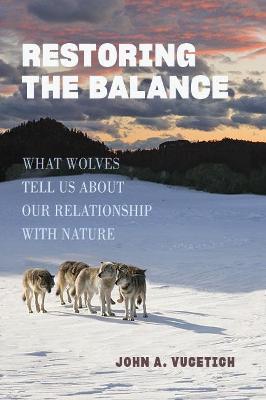Practical Guide to Nature Study
 portes grátis
portes grátis
Practical Guide to Nature Study
Fitzwilliams-Heck, C.J.
Kendall/Hunt Publishing Co ,U.S.
07/2021
277
Mole
Inglês
9781792466007
15 a 20 dias
Descrição não disponível.
Introduction
PART I: Discovering Nature
Chapter 1 - Building Your Naturalist Skills
1.1 Nature Awareness
Define Nature
What Is a Naturalist?
Your Naturalist Intelligence
Becoming a Naturalist
Relating Nature to Your Life
Where to Focus Your Attention
Observing Animals in the Wild
Wildlife Through the Seasons
Naturalizing Day and Night
Improving Your Observation Skills
Making Better Identifications
1.2 Naturalist Activities
Preparing for the Outdoors
The Simple Naturalist
Taxonomy: Classifying What You Observe
Going Deeper into Nature
The Sit Spot
The Field Inventory
1.3 Reflecting on Chapter 1-Building Your Naturalist Skills
Chapter 2 - Nature as Your "Place"
2.1 Making Connections-An Ecology Primer
Ecology Defined
An Ecological Perspective
Ecological Knowledge
Ecology's Scale of Life
2.2 Landscape Shapers- Glaciers, Climate, Winter, Fire, Humans
Glaciers
Climate
Winter
Fire
Humans
2.3 The Watershed-A Broad, Yet Local Perspective
What Is a Watershed?
Scales of Place
Making It Real
Protecting and Improving Watershed Quality
2.4 Scientific Thinking
Inquiry Process
Nature Studies
2.5 Reflecting on Chapter 2-Nature as Your "Place"
Review Questions
Chapter 3 - Parts of Nature: Terrestrial Habitats and Freshwater Systems
3.1 Regional Landscapes
3.2 Classifying and Interpreting Habitats
Habitat Defined
Classifying a Habitat
A Habitat's Wildlife
Habitat Signs and Stimuli
3.3 Terrestrial Ecosystems
Succession
Community Characteristics
Forestry Management Goals
3.4 Basic Geology and Soil Types
Rock Types
Soil Basics
3.5 Freshwater Ecosystems
Water Properties and Nature
Lake Environments
River Characteristics
Wetland Wonders
3.6 Reflecting on Chapter 3-Parts of Nature
PART II: The Science of Nature Study
Chapter 4 - Ecology Essentials
4.1 Scales of Life: Populations and Communities
Population Dynamics
Community Relationships
4.2 Evolution Basics
Background
Basic Genetics
Scientific Law and Scientific Theory
How Evolution Occurs
Evidence for Evolution
4.3 The Four Spheres of Earth and Energy Flow
The Four Systems Form an Ecosystem
Parts of the Biosphere
4.4 Biogeochemical Cycles
Carbon Cycle
Nitrogen Cycle
Water Cycle
4.5 Biodiversity, Conservation, and Management
Benefits of Biodiversity
Levels of Species Loss
What Causes Biodiversity Loss?
Conservation Approaches
Why Should Nature Be Managed?
PART III: Natural Histories and Field Guides
Chapter 5 - Fungus
5.1 Importance
5.2 Defining Fungus
5.3 Fungus-like Organisms
5.4 Kingdom Fungi
5.5 Spore Dispersal
Wind Dispersal
Water Dispersal
Animal Dispersal
Bursting-cell Dispersal
Rounding-off Dispersal
Basidiospore Discharge
5.6 Ecological Role of Fungus
Lichen
5.7 Mushroom Hunting
5.8 Field Guide: Fungus
How to Identify Fungus
Fungus Species
Chapter 6 - Plants
6.1 Plant Basics
6.2 Plant Divisions
Moss
Ferns
Conifers
Flowering Plants
6.3 The Woody Structures
6.4 What Happens to Leaves in the Fall?
6.5 Ecological Importance of Trees
6.6 Field Guide: Primitive Plants
Kingdom Protista-The Phytoplankton, Green Algae
Kingdom Plantae-Division Bryophyta, The "Mosses"
6.7 Field Guide: Herbaceous Plants
Ferns and Their Relatives
Wildflowers
Plant Families to Know
Identification Key
Wildflower Species Accounts
6.8 Field Guide: Identifying Trees
Questions to Ask Yourself
Tree Identification Keys
Which Tree Key Should I Use?
Coniferous Tree Key
Deciduous Tree Keys (Broadleaf Trees and Shrubs)
6.9 Field Guide: Trees and Shrubs
Conifers (Evergreen; Needleleaf)
Deciduous (Broadleaf)
Chapter 7 - Invertebrate Animals
7.1 Animal-Like Organisms: Kingdom Protista
7.2 Freshwater Invertebrates: Kingdom Animalia
7.3 Arthropods
Class Insecta
Class Arachnida-Spiders, Ticks, and Mites
Subphylum Crustacea-Zooplankton and Crayfish
Class Diplopoda-Millipedes
Class Chilopoda-Centipedes
7.4 Field Guide: Insects, Spiders, and Other Arthropods
Arthropod Identification Key
Arthropod Species
Chapter 8 - Vertebrate Animals
8.1 Fish
Overview
Fish Classes
Fish Management
What Can I Do?
Field Guide: Fish
Fish Family Identification Key
Fish Species Accounts
8.2 Amphibians
Overview
Amphibian Evolution
Frogs and Toads-Order Anura
Salamanders-Order Caudata
Amphibian Anatomy and Physiology
Vocalizations
Migration
Dormancy
Amphibian Decline
Why Should We Care? What Can We Do?
Field Guide: Amphibian Species Accounts
Frogs
Salamanders
8.3 Reptiles
Overview
Distribution
Reptile Evolution
Types of Reptiles
Reptilian Skin and Skeletal Features
Reptile Physiology
Growth and Longevity
Reptile Threats
What Is Being Done?
Field Guide: Reptile Species Accounts
Turtles
Snakes
Lizard
8.4 Birds
Overview
Bird Evolution
Anatomy
Physiology
Bird Behavior
Bird Conservation and Management
What Can We Do to Help the Birds?
Making Connections
Field Guide: Birds
Determine the Bird Size
What is the Bird's Shape?
Silhouettes
Field Marks
Patterns in Flight
Foraging Style
Habitat
Common Birds to Know
Bird Species Accounts
Birds Identification Key
8.5 Mammals
Overview
Mammal Evolution
Groups of Mammals
Skin Glands
Mammary Glands
Sweat Glands
Hair Structures and Functions
Mammal Physiology
Skeletal System
What Can You Do?
Review Questions
Field Guide: Mammals
Signs of Mammals
Mammal Species Accounts
Mammal Identification Key
8.6 Chordate Characteristics Comparison Chart
Conclusion: Wrapping the Bundle
References
Index
PART I: Discovering Nature
Chapter 1 - Building Your Naturalist Skills
1.1 Nature Awareness
Define Nature
What Is a Naturalist?
Your Naturalist Intelligence
Becoming a Naturalist
Relating Nature to Your Life
Where to Focus Your Attention
Observing Animals in the Wild
Wildlife Through the Seasons
Naturalizing Day and Night
Improving Your Observation Skills
Making Better Identifications
1.2 Naturalist Activities
Preparing for the Outdoors
The Simple Naturalist
Taxonomy: Classifying What You Observe
Going Deeper into Nature
The Sit Spot
The Field Inventory
1.3 Reflecting on Chapter 1-Building Your Naturalist Skills
Chapter 2 - Nature as Your "Place"
2.1 Making Connections-An Ecology Primer
Ecology Defined
An Ecological Perspective
Ecological Knowledge
Ecology's Scale of Life
2.2 Landscape Shapers- Glaciers, Climate, Winter, Fire, Humans
Glaciers
Climate
Winter
Fire
Humans
2.3 The Watershed-A Broad, Yet Local Perspective
What Is a Watershed?
Scales of Place
Making It Real
Protecting and Improving Watershed Quality
2.4 Scientific Thinking
Inquiry Process
Nature Studies
2.5 Reflecting on Chapter 2-Nature as Your "Place"
Review Questions
Chapter 3 - Parts of Nature: Terrestrial Habitats and Freshwater Systems
3.1 Regional Landscapes
3.2 Classifying and Interpreting Habitats
Habitat Defined
Classifying a Habitat
A Habitat's Wildlife
Habitat Signs and Stimuli
3.3 Terrestrial Ecosystems
Succession
Community Characteristics
Forestry Management Goals
3.4 Basic Geology and Soil Types
Rock Types
Soil Basics
3.5 Freshwater Ecosystems
Water Properties and Nature
Lake Environments
River Characteristics
Wetland Wonders
3.6 Reflecting on Chapter 3-Parts of Nature
PART II: The Science of Nature Study
Chapter 4 - Ecology Essentials
4.1 Scales of Life: Populations and Communities
Population Dynamics
Community Relationships
4.2 Evolution Basics
Background
Basic Genetics
Scientific Law and Scientific Theory
How Evolution Occurs
Evidence for Evolution
4.3 The Four Spheres of Earth and Energy Flow
The Four Systems Form an Ecosystem
Parts of the Biosphere
4.4 Biogeochemical Cycles
Carbon Cycle
Nitrogen Cycle
Water Cycle
4.5 Biodiversity, Conservation, and Management
Benefits of Biodiversity
Levels of Species Loss
What Causes Biodiversity Loss?
Conservation Approaches
Why Should Nature Be Managed?
PART III: Natural Histories and Field Guides
Chapter 5 - Fungus
5.1 Importance
5.2 Defining Fungus
5.3 Fungus-like Organisms
5.4 Kingdom Fungi
5.5 Spore Dispersal
Wind Dispersal
Water Dispersal
Animal Dispersal
Bursting-cell Dispersal
Rounding-off Dispersal
Basidiospore Discharge
5.6 Ecological Role of Fungus
Lichen
5.7 Mushroom Hunting
5.8 Field Guide: Fungus
How to Identify Fungus
Fungus Species
Chapter 6 - Plants
6.1 Plant Basics
6.2 Plant Divisions
Moss
Ferns
Conifers
Flowering Plants
6.3 The Woody Structures
6.4 What Happens to Leaves in the Fall?
6.5 Ecological Importance of Trees
6.6 Field Guide: Primitive Plants
Kingdom Protista-The Phytoplankton, Green Algae
Kingdom Plantae-Division Bryophyta, The "Mosses"
6.7 Field Guide: Herbaceous Plants
Ferns and Their Relatives
Wildflowers
Plant Families to Know
Identification Key
Wildflower Species Accounts
6.8 Field Guide: Identifying Trees
Questions to Ask Yourself
Tree Identification Keys
Which Tree Key Should I Use?
Coniferous Tree Key
Deciduous Tree Keys (Broadleaf Trees and Shrubs)
6.9 Field Guide: Trees and Shrubs
Conifers (Evergreen; Needleleaf)
Deciduous (Broadleaf)
Chapter 7 - Invertebrate Animals
7.1 Animal-Like Organisms: Kingdom Protista
7.2 Freshwater Invertebrates: Kingdom Animalia
7.3 Arthropods
Class Insecta
Class Arachnida-Spiders, Ticks, and Mites
Subphylum Crustacea-Zooplankton and Crayfish
Class Diplopoda-Millipedes
Class Chilopoda-Centipedes
7.4 Field Guide: Insects, Spiders, and Other Arthropods
Arthropod Identification Key
Arthropod Species
Chapter 8 - Vertebrate Animals
8.1 Fish
Overview
Fish Classes
Fish Management
What Can I Do?
Field Guide: Fish
Fish Family Identification Key
Fish Species Accounts
8.2 Amphibians
Overview
Amphibian Evolution
Frogs and Toads-Order Anura
Salamanders-Order Caudata
Amphibian Anatomy and Physiology
Vocalizations
Migration
Dormancy
Amphibian Decline
Why Should We Care? What Can We Do?
Field Guide: Amphibian Species Accounts
Frogs
Salamanders
8.3 Reptiles
Overview
Distribution
Reptile Evolution
Types of Reptiles
Reptilian Skin and Skeletal Features
Reptile Physiology
Growth and Longevity
Reptile Threats
What Is Being Done?
Field Guide: Reptile Species Accounts
Turtles
Snakes
Lizard
8.4 Birds
Overview
Bird Evolution
Anatomy
Physiology
Bird Behavior
Bird Conservation and Management
What Can We Do to Help the Birds?
Making Connections
Field Guide: Birds
Determine the Bird Size
What is the Bird's Shape?
Silhouettes
Field Marks
Patterns in Flight
Foraging Style
Habitat
Common Birds to Know
Bird Species Accounts
Birds Identification Key
8.5 Mammals
Overview
Mammal Evolution
Groups of Mammals
Skin Glands
Mammary Glands
Sweat Glands
Hair Structures and Functions
Mammal Physiology
Skeletal System
What Can You Do?
Review Questions
Field Guide: Mammals
Signs of Mammals
Mammal Species Accounts
Mammal Identification Key
8.6 Chordate Characteristics Comparison Chart
Conclusion: Wrapping the Bundle
References
Index
Este título pertence ao(s) assunto(s) indicados(s). Para ver outros títulos clique no assunto desejado.
Introduction
PART I: Discovering Nature
Chapter 1 - Building Your Naturalist Skills
1.1 Nature Awareness
Define Nature
What Is a Naturalist?
Your Naturalist Intelligence
Becoming a Naturalist
Relating Nature to Your Life
Where to Focus Your Attention
Observing Animals in the Wild
Wildlife Through the Seasons
Naturalizing Day and Night
Improving Your Observation Skills
Making Better Identifications
1.2 Naturalist Activities
Preparing for the Outdoors
The Simple Naturalist
Taxonomy: Classifying What You Observe
Going Deeper into Nature
The Sit Spot
The Field Inventory
1.3 Reflecting on Chapter 1-Building Your Naturalist Skills
Chapter 2 - Nature as Your "Place"
2.1 Making Connections-An Ecology Primer
Ecology Defined
An Ecological Perspective
Ecological Knowledge
Ecology's Scale of Life
2.2 Landscape Shapers- Glaciers, Climate, Winter, Fire, Humans
Glaciers
Climate
Winter
Fire
Humans
2.3 The Watershed-A Broad, Yet Local Perspective
What Is a Watershed?
Scales of Place
Making It Real
Protecting and Improving Watershed Quality
2.4 Scientific Thinking
Inquiry Process
Nature Studies
2.5 Reflecting on Chapter 2-Nature as Your "Place"
Review Questions
Chapter 3 - Parts of Nature: Terrestrial Habitats and Freshwater Systems
3.1 Regional Landscapes
3.2 Classifying and Interpreting Habitats
Habitat Defined
Classifying a Habitat
A Habitat's Wildlife
Habitat Signs and Stimuli
3.3 Terrestrial Ecosystems
Succession
Community Characteristics
Forestry Management Goals
3.4 Basic Geology and Soil Types
Rock Types
Soil Basics
3.5 Freshwater Ecosystems
Water Properties and Nature
Lake Environments
River Characteristics
Wetland Wonders
3.6 Reflecting on Chapter 3-Parts of Nature
PART II: The Science of Nature Study
Chapter 4 - Ecology Essentials
4.1 Scales of Life: Populations and Communities
Population Dynamics
Community Relationships
4.2 Evolution Basics
Background
Basic Genetics
Scientific Law and Scientific Theory
How Evolution Occurs
Evidence for Evolution
4.3 The Four Spheres of Earth and Energy Flow
The Four Systems Form an Ecosystem
Parts of the Biosphere
4.4 Biogeochemical Cycles
Carbon Cycle
Nitrogen Cycle
Water Cycle
4.5 Biodiversity, Conservation, and Management
Benefits of Biodiversity
Levels of Species Loss
What Causes Biodiversity Loss?
Conservation Approaches
Why Should Nature Be Managed?
PART III: Natural Histories and Field Guides
Chapter 5 - Fungus
5.1 Importance
5.2 Defining Fungus
5.3 Fungus-like Organisms
5.4 Kingdom Fungi
5.5 Spore Dispersal
Wind Dispersal
Water Dispersal
Animal Dispersal
Bursting-cell Dispersal
Rounding-off Dispersal
Basidiospore Discharge
5.6 Ecological Role of Fungus
Lichen
5.7 Mushroom Hunting
5.8 Field Guide: Fungus
How to Identify Fungus
Fungus Species
Chapter 6 - Plants
6.1 Plant Basics
6.2 Plant Divisions
Moss
Ferns
Conifers
Flowering Plants
6.3 The Woody Structures
6.4 What Happens to Leaves in the Fall?
6.5 Ecological Importance of Trees
6.6 Field Guide: Primitive Plants
Kingdom Protista-The Phytoplankton, Green Algae
Kingdom Plantae-Division Bryophyta, The "Mosses"
6.7 Field Guide: Herbaceous Plants
Ferns and Their Relatives
Wildflowers
Plant Families to Know
Identification Key
Wildflower Species Accounts
6.8 Field Guide: Identifying Trees
Questions to Ask Yourself
Tree Identification Keys
Which Tree Key Should I Use?
Coniferous Tree Key
Deciduous Tree Keys (Broadleaf Trees and Shrubs)
6.9 Field Guide: Trees and Shrubs
Conifers (Evergreen; Needleleaf)
Deciduous (Broadleaf)
Chapter 7 - Invertebrate Animals
7.1 Animal-Like Organisms: Kingdom Protista
7.2 Freshwater Invertebrates: Kingdom Animalia
7.3 Arthropods
Class Insecta
Class Arachnida-Spiders, Ticks, and Mites
Subphylum Crustacea-Zooplankton and Crayfish
Class Diplopoda-Millipedes
Class Chilopoda-Centipedes
7.4 Field Guide: Insects, Spiders, and Other Arthropods
Arthropod Identification Key
Arthropod Species
Chapter 8 - Vertebrate Animals
8.1 Fish
Overview
Fish Classes
Fish Management
What Can I Do?
Field Guide: Fish
Fish Family Identification Key
Fish Species Accounts
8.2 Amphibians
Overview
Amphibian Evolution
Frogs and Toads-Order Anura
Salamanders-Order Caudata
Amphibian Anatomy and Physiology
Vocalizations
Migration
Dormancy
Amphibian Decline
Why Should We Care? What Can We Do?
Field Guide: Amphibian Species Accounts
Frogs
Salamanders
8.3 Reptiles
Overview
Distribution
Reptile Evolution
Types of Reptiles
Reptilian Skin and Skeletal Features
Reptile Physiology
Growth and Longevity
Reptile Threats
What Is Being Done?
Field Guide: Reptile Species Accounts
Turtles
Snakes
Lizard
8.4 Birds
Overview
Bird Evolution
Anatomy
Physiology
Bird Behavior
Bird Conservation and Management
What Can We Do to Help the Birds?
Making Connections
Field Guide: Birds
Determine the Bird Size
What is the Bird's Shape?
Silhouettes
Field Marks
Patterns in Flight
Foraging Style
Habitat
Common Birds to Know
Bird Species Accounts
Birds Identification Key
8.5 Mammals
Overview
Mammal Evolution
Groups of Mammals
Skin Glands
Mammary Glands
Sweat Glands
Hair Structures and Functions
Mammal Physiology
Skeletal System
What Can You Do?
Review Questions
Field Guide: Mammals
Signs of Mammals
Mammal Species Accounts
Mammal Identification Key
8.6 Chordate Characteristics Comparison Chart
Conclusion: Wrapping the Bundle
References
Index
PART I: Discovering Nature
Chapter 1 - Building Your Naturalist Skills
1.1 Nature Awareness
Define Nature
What Is a Naturalist?
Your Naturalist Intelligence
Becoming a Naturalist
Relating Nature to Your Life
Where to Focus Your Attention
Observing Animals in the Wild
Wildlife Through the Seasons
Naturalizing Day and Night
Improving Your Observation Skills
Making Better Identifications
1.2 Naturalist Activities
Preparing for the Outdoors
The Simple Naturalist
Taxonomy: Classifying What You Observe
Going Deeper into Nature
The Sit Spot
The Field Inventory
1.3 Reflecting on Chapter 1-Building Your Naturalist Skills
Chapter 2 - Nature as Your "Place"
2.1 Making Connections-An Ecology Primer
Ecology Defined
An Ecological Perspective
Ecological Knowledge
Ecology's Scale of Life
2.2 Landscape Shapers- Glaciers, Climate, Winter, Fire, Humans
Glaciers
Climate
Winter
Fire
Humans
2.3 The Watershed-A Broad, Yet Local Perspective
What Is a Watershed?
Scales of Place
Making It Real
Protecting and Improving Watershed Quality
2.4 Scientific Thinking
Inquiry Process
Nature Studies
2.5 Reflecting on Chapter 2-Nature as Your "Place"
Review Questions
Chapter 3 - Parts of Nature: Terrestrial Habitats and Freshwater Systems
3.1 Regional Landscapes
3.2 Classifying and Interpreting Habitats
Habitat Defined
Classifying a Habitat
A Habitat's Wildlife
Habitat Signs and Stimuli
3.3 Terrestrial Ecosystems
Succession
Community Characteristics
Forestry Management Goals
3.4 Basic Geology and Soil Types
Rock Types
Soil Basics
3.5 Freshwater Ecosystems
Water Properties and Nature
Lake Environments
River Characteristics
Wetland Wonders
3.6 Reflecting on Chapter 3-Parts of Nature
PART II: The Science of Nature Study
Chapter 4 - Ecology Essentials
4.1 Scales of Life: Populations and Communities
Population Dynamics
Community Relationships
4.2 Evolution Basics
Background
Basic Genetics
Scientific Law and Scientific Theory
How Evolution Occurs
Evidence for Evolution
4.3 The Four Spheres of Earth and Energy Flow
The Four Systems Form an Ecosystem
Parts of the Biosphere
4.4 Biogeochemical Cycles
Carbon Cycle
Nitrogen Cycle
Water Cycle
4.5 Biodiversity, Conservation, and Management
Benefits of Biodiversity
Levels of Species Loss
What Causes Biodiversity Loss?
Conservation Approaches
Why Should Nature Be Managed?
PART III: Natural Histories and Field Guides
Chapter 5 - Fungus
5.1 Importance
5.2 Defining Fungus
5.3 Fungus-like Organisms
5.4 Kingdom Fungi
5.5 Spore Dispersal
Wind Dispersal
Water Dispersal
Animal Dispersal
Bursting-cell Dispersal
Rounding-off Dispersal
Basidiospore Discharge
5.6 Ecological Role of Fungus
Lichen
5.7 Mushroom Hunting
5.8 Field Guide: Fungus
How to Identify Fungus
Fungus Species
Chapter 6 - Plants
6.1 Plant Basics
6.2 Plant Divisions
Moss
Ferns
Conifers
Flowering Plants
6.3 The Woody Structures
6.4 What Happens to Leaves in the Fall?
6.5 Ecological Importance of Trees
6.6 Field Guide: Primitive Plants
Kingdom Protista-The Phytoplankton, Green Algae
Kingdom Plantae-Division Bryophyta, The "Mosses"
6.7 Field Guide: Herbaceous Plants
Ferns and Their Relatives
Wildflowers
Plant Families to Know
Identification Key
Wildflower Species Accounts
6.8 Field Guide: Identifying Trees
Questions to Ask Yourself
Tree Identification Keys
Which Tree Key Should I Use?
Coniferous Tree Key
Deciduous Tree Keys (Broadleaf Trees and Shrubs)
6.9 Field Guide: Trees and Shrubs
Conifers (Evergreen; Needleleaf)
Deciduous (Broadleaf)
Chapter 7 - Invertebrate Animals
7.1 Animal-Like Organisms: Kingdom Protista
7.2 Freshwater Invertebrates: Kingdom Animalia
7.3 Arthropods
Class Insecta
Class Arachnida-Spiders, Ticks, and Mites
Subphylum Crustacea-Zooplankton and Crayfish
Class Diplopoda-Millipedes
Class Chilopoda-Centipedes
7.4 Field Guide: Insects, Spiders, and Other Arthropods
Arthropod Identification Key
Arthropod Species
Chapter 8 - Vertebrate Animals
8.1 Fish
Overview
Fish Classes
Fish Management
What Can I Do?
Field Guide: Fish
Fish Family Identification Key
Fish Species Accounts
8.2 Amphibians
Overview
Amphibian Evolution
Frogs and Toads-Order Anura
Salamanders-Order Caudata
Amphibian Anatomy and Physiology
Vocalizations
Migration
Dormancy
Amphibian Decline
Why Should We Care? What Can We Do?
Field Guide: Amphibian Species Accounts
Frogs
Salamanders
8.3 Reptiles
Overview
Distribution
Reptile Evolution
Types of Reptiles
Reptilian Skin and Skeletal Features
Reptile Physiology
Growth and Longevity
Reptile Threats
What Is Being Done?
Field Guide: Reptile Species Accounts
Turtles
Snakes
Lizard
8.4 Birds
Overview
Bird Evolution
Anatomy
Physiology
Bird Behavior
Bird Conservation and Management
What Can We Do to Help the Birds?
Making Connections
Field Guide: Birds
Determine the Bird Size
What is the Bird's Shape?
Silhouettes
Field Marks
Patterns in Flight
Foraging Style
Habitat
Common Birds to Know
Bird Species Accounts
Birds Identification Key
8.5 Mammals
Overview
Mammal Evolution
Groups of Mammals
Skin Glands
Mammary Glands
Sweat Glands
Hair Structures and Functions
Mammal Physiology
Skeletal System
What Can You Do?
Review Questions
Field Guide: Mammals
Signs of Mammals
Mammal Species Accounts
Mammal Identification Key
8.6 Chordate Characteristics Comparison Chart
Conclusion: Wrapping the Bundle
References
Index
Este título pertence ao(s) assunto(s) indicados(s). Para ver outros títulos clique no assunto desejado.







